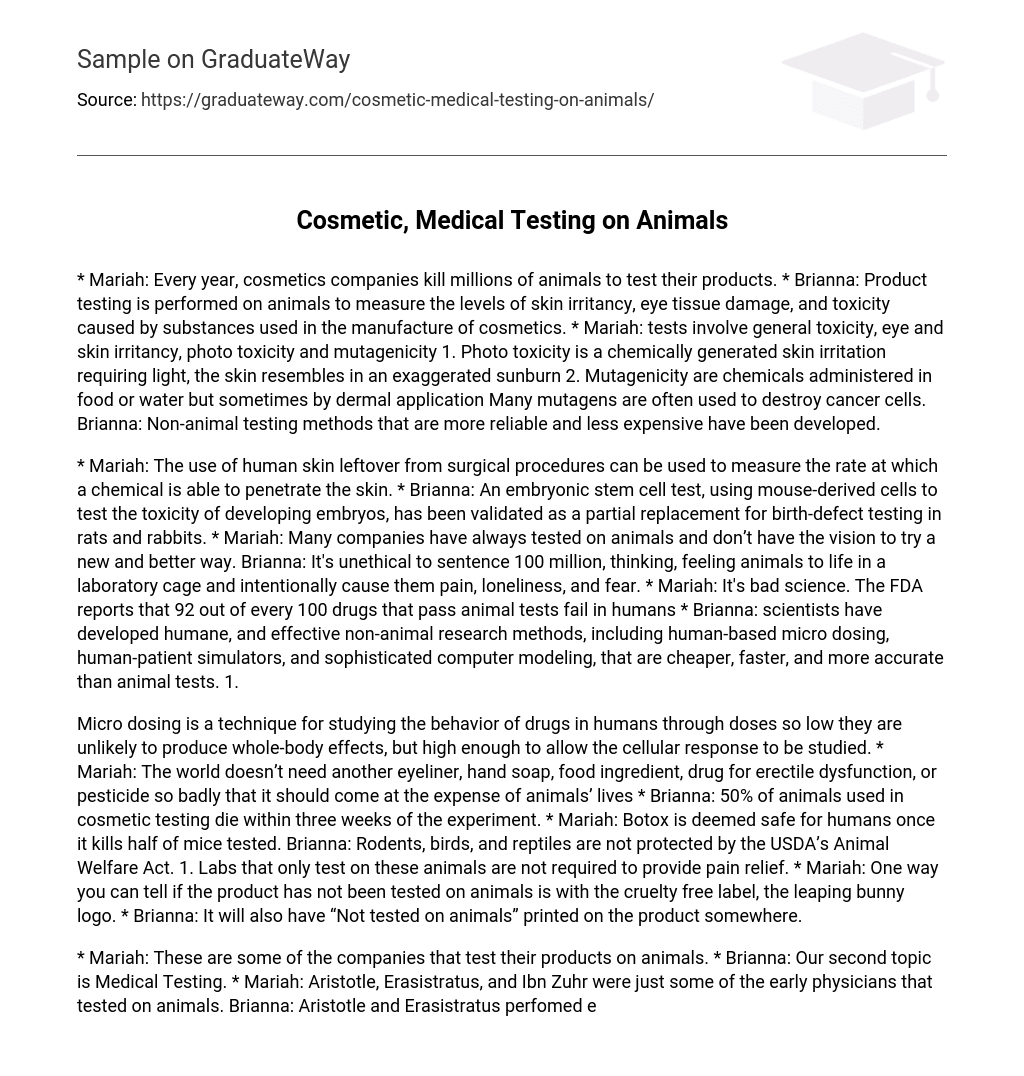Every year, cosmetics companies kill millions of animals to test their products. Product testing is performed on animals to measure the levels of skin irritancy, eye tissue damage, and toxicity caused by substances used in the manufacture of cosmetics. tests involve general toxicity, eye and skin irritancy, photo toxicity and mutagenicity. Photo toxicity is a chemically generated skin irritation requiring light, the skin resembles in an exaggerated sunburn. Mutagenicity are chemicals administered in food or water but sometimes by dermal application Many mutagens are often used to destroy cancer cells.
Non-animal testing methods that are more reliable and less expensive have been developed. The use of human skin leftover from surgical procedures can be used to measure the rate at which a chemical is able to penetrate the skin. An embryonic stem cell test, using mouse-derived cells to test the toxicity of developing embryos, has been validated as a partial replacement for birth-defect testing in rats and rabbits.
Many companies have always tested on animals and don’t have the vision to try a new and better way. It’s unethical to sentence 100 million, thinking, feeling animals to life in a laboratory cage and intentionally cause them pain, loneliness, and fear. It’s bad science. The FDA reports that 92 out of every 100 drugs that pass animal tests fail in humans. scientists have developed humane, and effective non-animal research methods, including human-based micro dosing, human-patient simulators, and sophisticated computer modeling, that are cheaper, faster, and more accurate than animal tests. Micro dosing is a technique for studying the behavior of drugs in humans through doses so low they are unlikely to produce whole-body effects, but high enough to allow the cellular response to be studied.
The world doesn’t need another eyeliner, hand soap, food ingredient, drug for erectile dysfunction, or pesticide so badly that it should come at the expense of animals’ lives. Brianna: 50% of animals used in cosmetic testing die within three weeks of the experiment. Botox is deemed safe for humans once it kills half of mice tested. Brianna: Rodents, birds, and reptiles are not protected by the USDA’s Animal Welfare Act. 1. Labs that only test on these animals are not required to provide pain relief. One way you can tell if the product has not been tested on animals is with the cruelty free label, the leaping bunny logo. It will also have “Not tested on animals” printed on the product somewhere.
These are some of the companies that test their products on animals. Our second topic is Medical Testing. Aristotle, Erasistratus, and Ibn Zuhr were just some of the early physicians that tested on animals. Brianna: Aristotle and Erasistratus perfomed experiments on living animals.
Ibn Zuhr was an Arab physician in the 12th century Moorish, Spain. He introduced animal testing as an experimental method for testing surgical procedures before applying them to human patients. Animals have been used repeatedly throughout the history of biomedical research.
In recent years, the practice of using animals for biomedical research has come under severe evaluation by animal protection and animal rights groups. Laws have been passed in several countries to make the practice more ‘humane’. Many people also believe that animals are lower to humans and very different from them, hence results from animals cannot be applied to humans. Those in favor of animal testing argue that experiments on animals are necessary to advance medical and biological knowledge. This has led to the 3Rs campaign, which advocates the search
- for the replacement of animals with non-living models;
- reduction in the use of animals;
- refinement of animal use practices.





